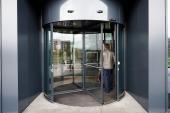Longer Work Hours After MI Tied to Higher Risk of Recurrent Events
Working 55 hours or more each week increased risk by around 70%, comparable to what’s posed by current smoking.

Patients who work long hours shortly after returning to their jobs following a myocardial infarction are more vulnerable to experiencing a recurrent coronary heart disease (CHD) event, according to a prospective cohort study conducted in Canada. Moreover, researchers found the risk “noticeably increased in magnitude” after 4 years back in the workplace.
The findings, published online in the Journal of the American College of Cardiology, follow those of other studies showing long work hours carry cardiovascular risk. Xavier Trudel, PhD (Université Laval and CHU de Québec-Laval University Research Centre, Quebec City, Canada), and colleagues wanted to know whether the added risk was even more pronounced in patients with preexisting cardiovascular disease.
For patients who’ve had an MI, it turns out that working 55 hours or more is associated with a relative increase in CHD risk of around 70%—that’s comparable to the risk posed by current smoking, the researchers say.
For cardiologists, this opens the possibility that a reduction in work hours could be another means of secondary prevention. “Long working hours should be assessed as part of early and subsequent routine clinical follow-up to improve the prognosis of post-MI patients,” Trudel et al advise.
Jonathan Whiteson, MD (NYU Langone Health, New York, NY), who serves as director of cardiac rehabilitation at his institution, said this study helps quantify the secondary-prevention concept, which is one that makes sense but hasn’t been well-researched.
“This paper makes a very valid point,” Whiteson commented to TCTMD. “And that is: while cardiac rehabilitation programs work to get back to full health, the focus on occupational risk factors and vocational rehabilitation is just not there on a national level [in the United States]. It’s an area of opportunity that I think can be focused on more significantly.”
Job Strain Adds Another Layer
Across 30 hospitals in Quebec province, researchers enrolled 967 patients (11% women) aged 35 to 59 years who’d had a first MI. All had held a paid job in the year prior to their event. Work hours were assessed an average of 6 weeks after they had returned to their jobs. The median follow-up duration was 5.9 years.
Those who worked the most were more likely to be men, younger, and perceive themselves to be financially comfortable. They also were more apt to have CV risk factors like hypertension and diabetes and have an unhealthy lifestyle in terms of smoking, alcohol use, and physical inactivity. People in this category also reported higher job strain and less social support outside of work.
Recurrent CHD events (fatal or nonfatal MI and unstable angina) occurred in 205 patients. After adjusting for sociodemographic characteristics as well as factors related to lifestyle, clinical risk, work environment, and personality, risk was higher for people who worked at least 55 hours per week compared with 35-40 hours (HR 1.67; 95% CI 1.10-2.53). From a starting point of 40 hours, there was a linear increase in risk for each 10 hours added.
The largest gap in recurrent CHD risk was seen when comparing people who had job strain on top of working at least 55 hours versus those who worked 35-50 hours but didn’t have job strain (HR 2.55; 95% CI 1.30-4.98).
Acknowledging some limitations to their study, the researchers point out that it included few women, only assessed working hours at baseline, and may not be apply to other regions.
Cardiac Rehab and a Tailored Workplace
Editorialists Jian Li, MD, PhD (University of California, Los Angeles), and Johannes Siegrist, PhD (Heinrich-Heine-University of Düsseldorf, Germany), also note that the results may not be generalizable, since the study enrolled a very specific population. Still, they praise the study for being carefully designed and say it has practical implications in terms of risk assessment and the resources offered during cardiac rehab.
“Finally, beyond the scope of clinical medicine, tailored measures in occupational settings are required among patients with cardiac disease who return to work, given the fact that those people are likely to experience higher levels of stressful working conditions,” they write, adding that things like cognitive behavioral therapy and coaching would promote both job retention and disease management.
Whiteson said that at NYU Langone’s Rusk Rehabilitation they take a comprehensive approach that includes work-related support.
“Vocational rehabilitation looks at somebody’s disease/disability impairment and works on behalf of that individual to help level the playing field in terms of whether further education is needed to get back to their previous or future employment,” he explained. It also makes “sure that there are accommodations if an individual with disability needs [them], such as seating, computer workstation adjustments or environmental adjustments” to temperature, humidity, and lighting, for instance.
Overall, said Whiteson, there can be “tremendous pressure” to return quickly, noting that programs can serve as an “advocate for individuals with disability to get back into the workforce on an equal [footing].”
If you’re working more and more hours and then on top of that you have high stress but . . . less autonomy in your work environment, that’s the highest risk factor. Jonathan Whiteson
While patients are recovering, they need time to get cardiac rehab—time that might normally be spent on the job, he pointed out. Sessions typically begin around 2-4 weeks after an event like an MI and then continue for 3 months.
Whiteson stressed that the more rehab sessions a patient receives, the lower their risk. If a person doesn’t get the care they need they could then have a recurrent event that results in more-severe disability or death; this loss to the workforce is a cost to society as a whole.
As to whether the current study’s results are generalizable to other regions, he noted that this is always hard to translate across health systems. “But that being said, it’s very valid and it’s something that we need to look at here in the United States with regard to how we address occupational issues, work hours, and work stress in individuals with cardiovascular disease,” he urged.
Ideally, there would be a long-term study that enrolled people from a diverse range of backgrounds (ie, race/ethnicity, gender, socioeconomic status). “We have to think about the working lifespan and the entire lifespan,” he noted.
There could be lessons not only for secondary but also for primary prevention. “It’s a challenge, and the United States is a place that socially asks more and more of their workforce,” Whiteson observed, adding, “If you’re working more and more hours and then on top of that you have high stress but low decisional capacity, less autonomy in your work environment, that’s the highest risk factor.”
Trudel et al’s study, he said, “really exemplifies that.”
Work-related risk factors can already be employed in screening, Whiteson said, and should be brought to the attention of the American Association of Cardiovascular and Pulmonary Rehabilitation.
Caitlin E. Cox is News Editor of TCTMD and Associate Director, Editorial Content at the Cardiovascular Research Foundation. She produces the…
Read Full BioSources
Trudel X, Brisson C, Talbot D, et al. Long working hours and risk of recurrent coronary events. J Am Coll Cardiol. 2021;77:1616-1625.
Li J, Siegrist J. Occupational risks of recurrent coronary heart disease. J Am Coll Cardiol. 2021;77:1626-1628.
Disclosures
- The study was supported by the Heart and Stroke Foundation of Québec and by the Fonds de la Recherche en Santé du Québec.
- Trudel, Li, and Siegrist report no relevant conflicts of interest.





Comments